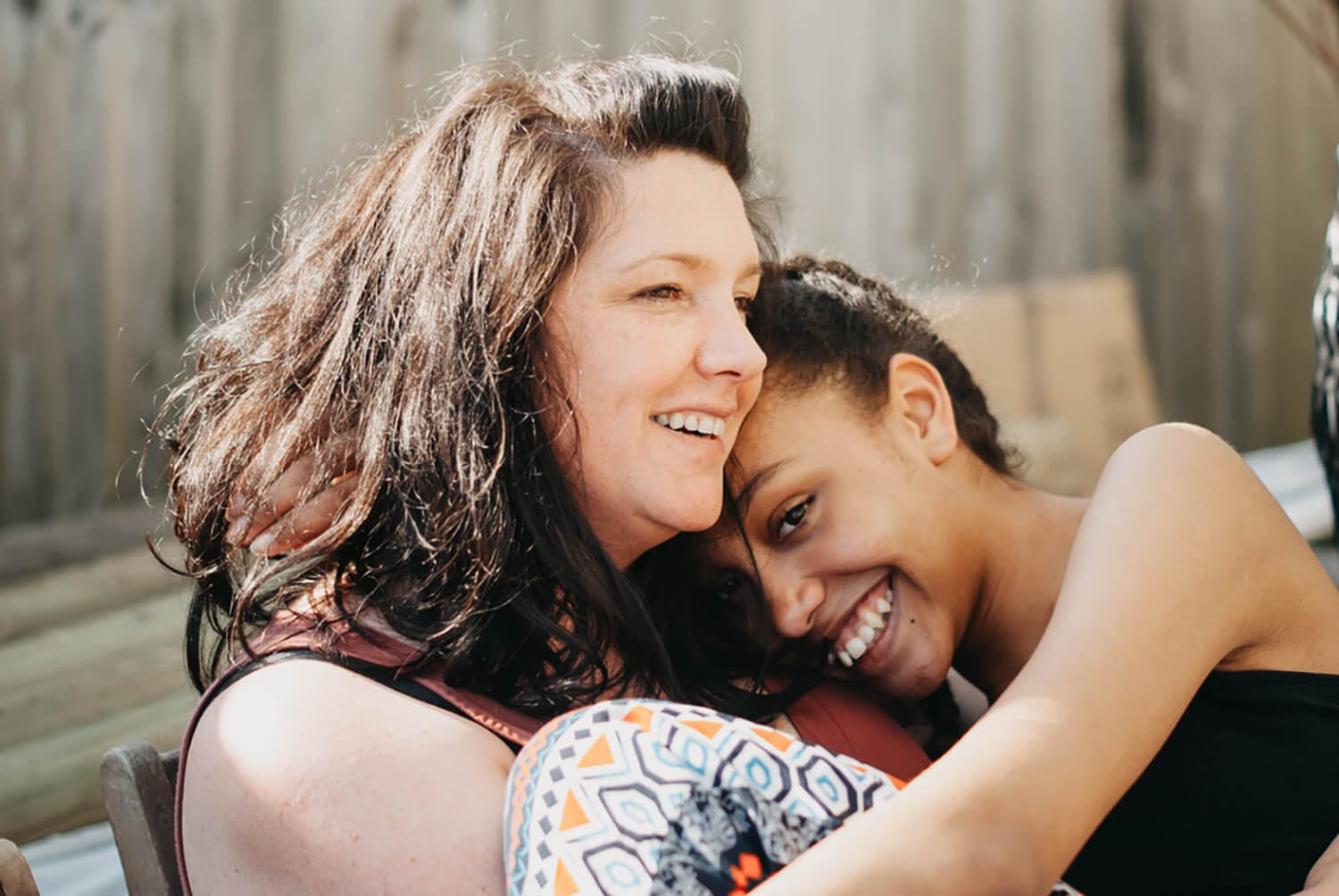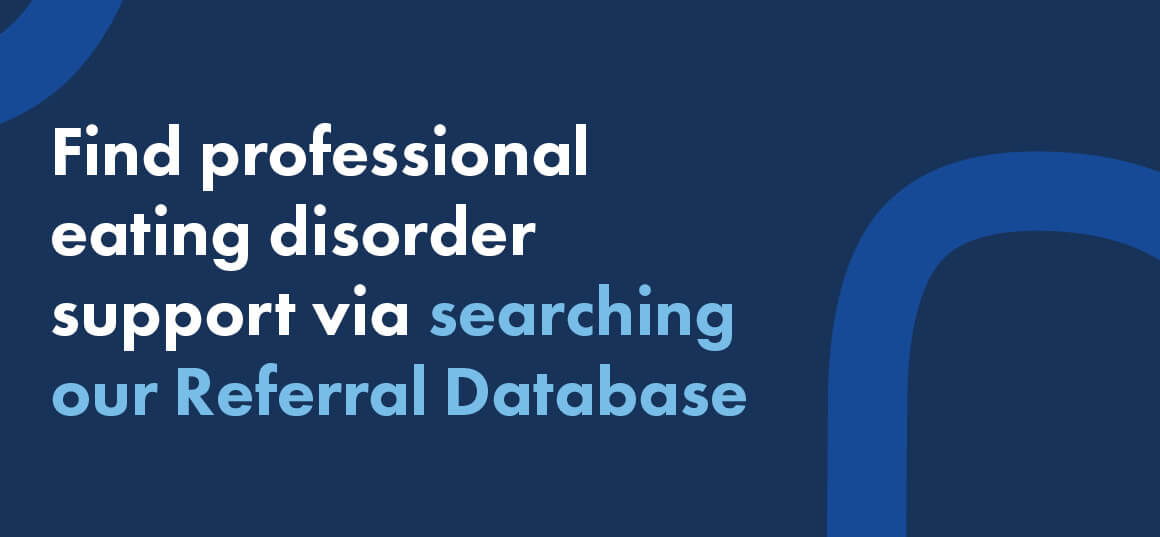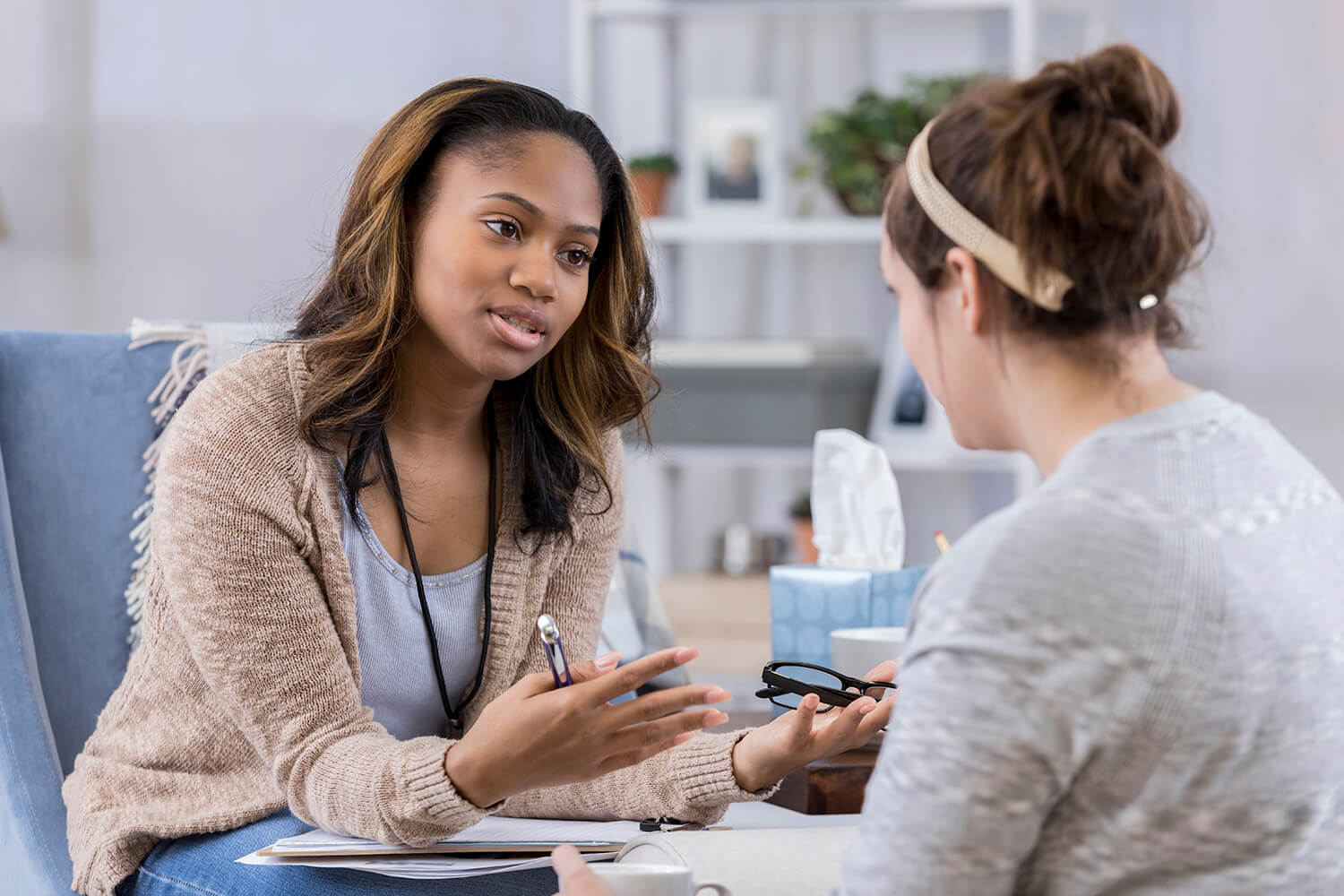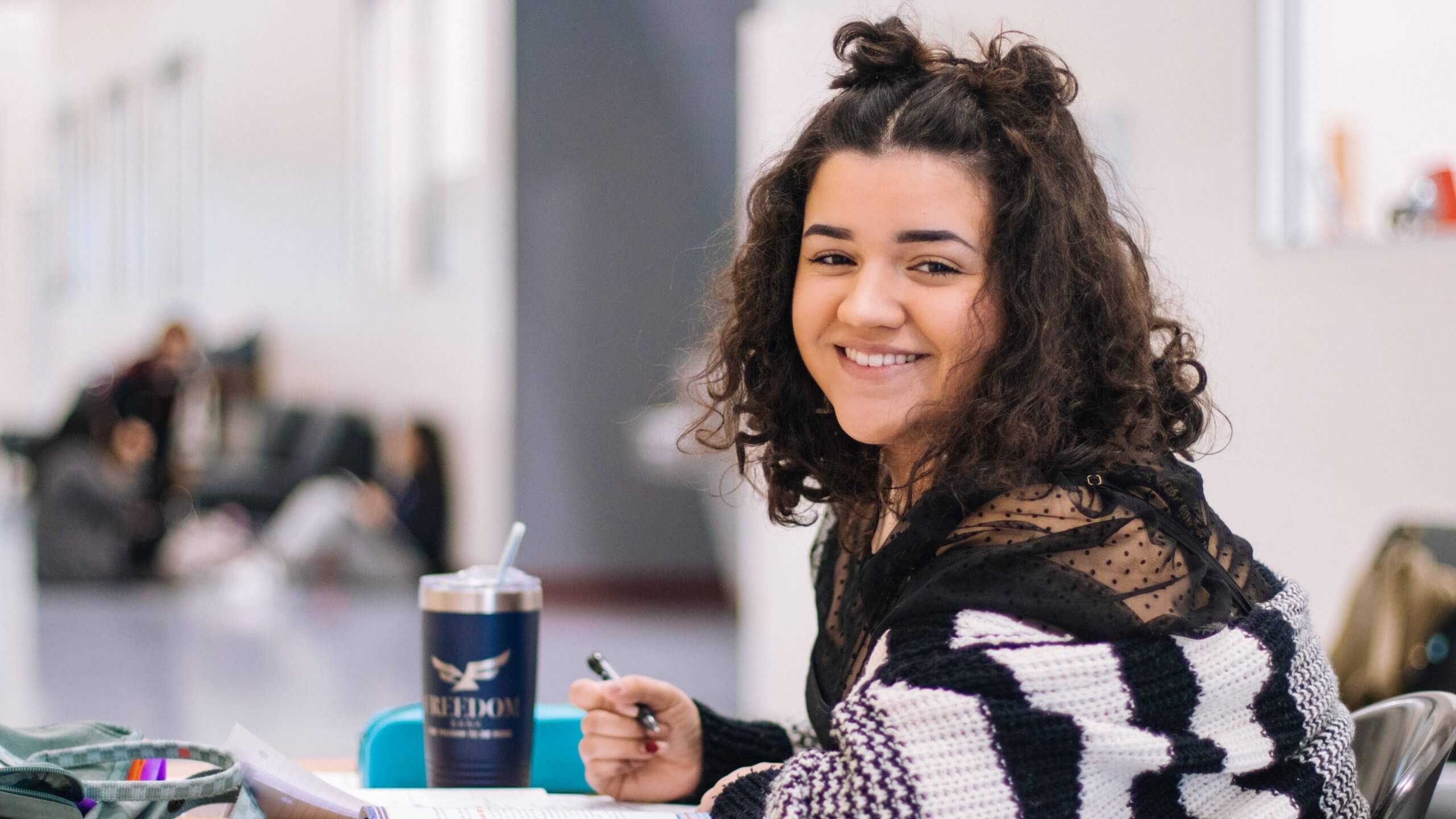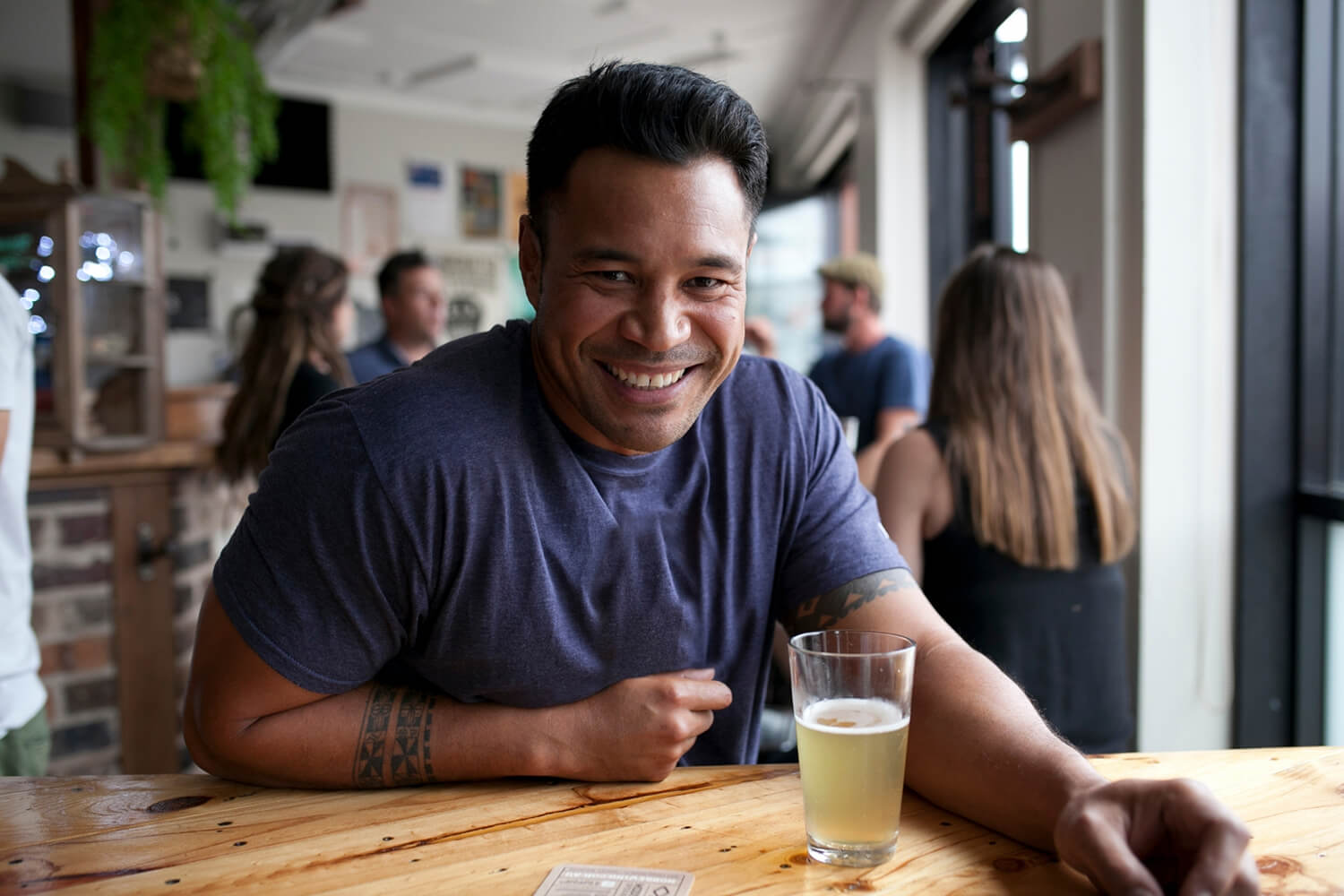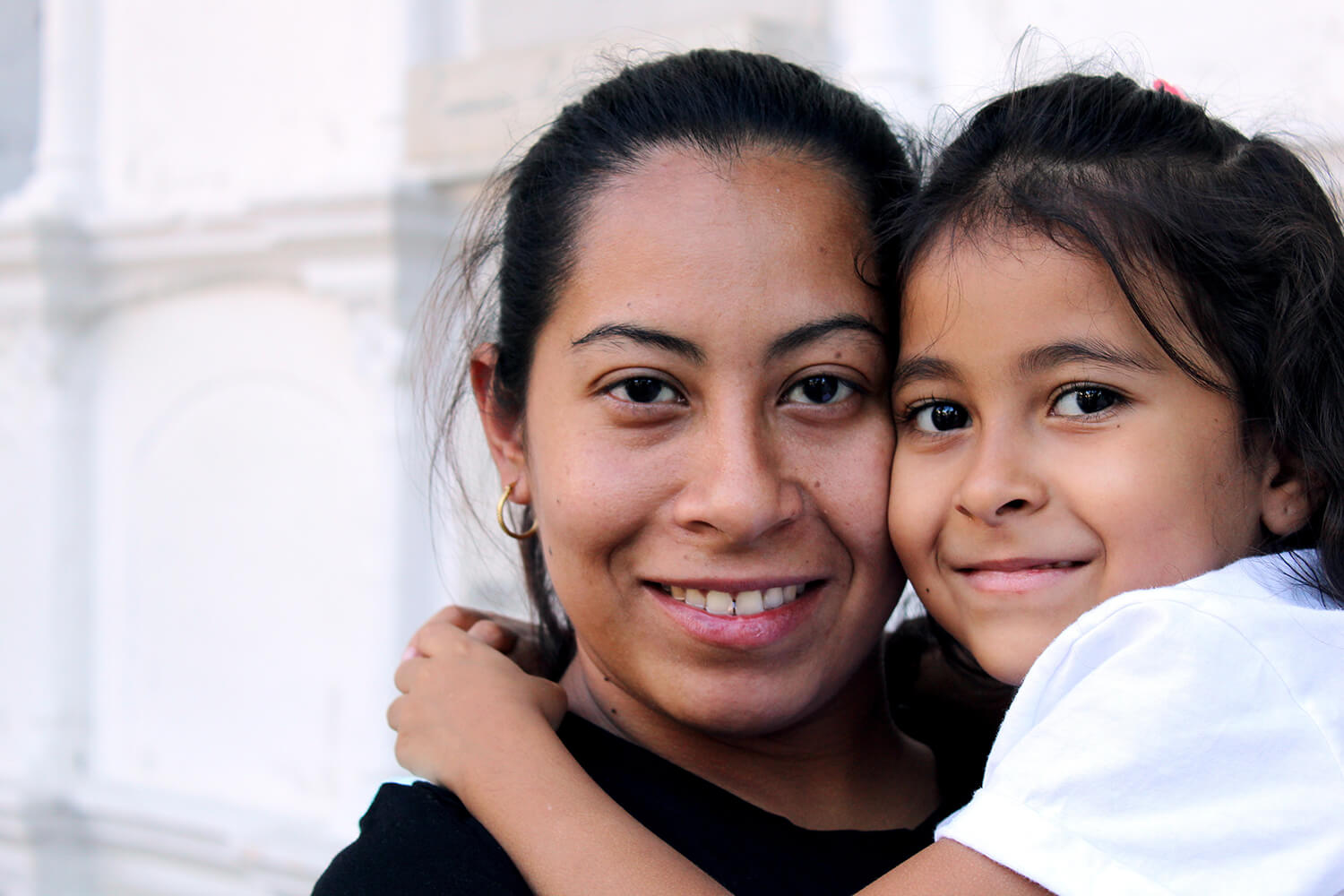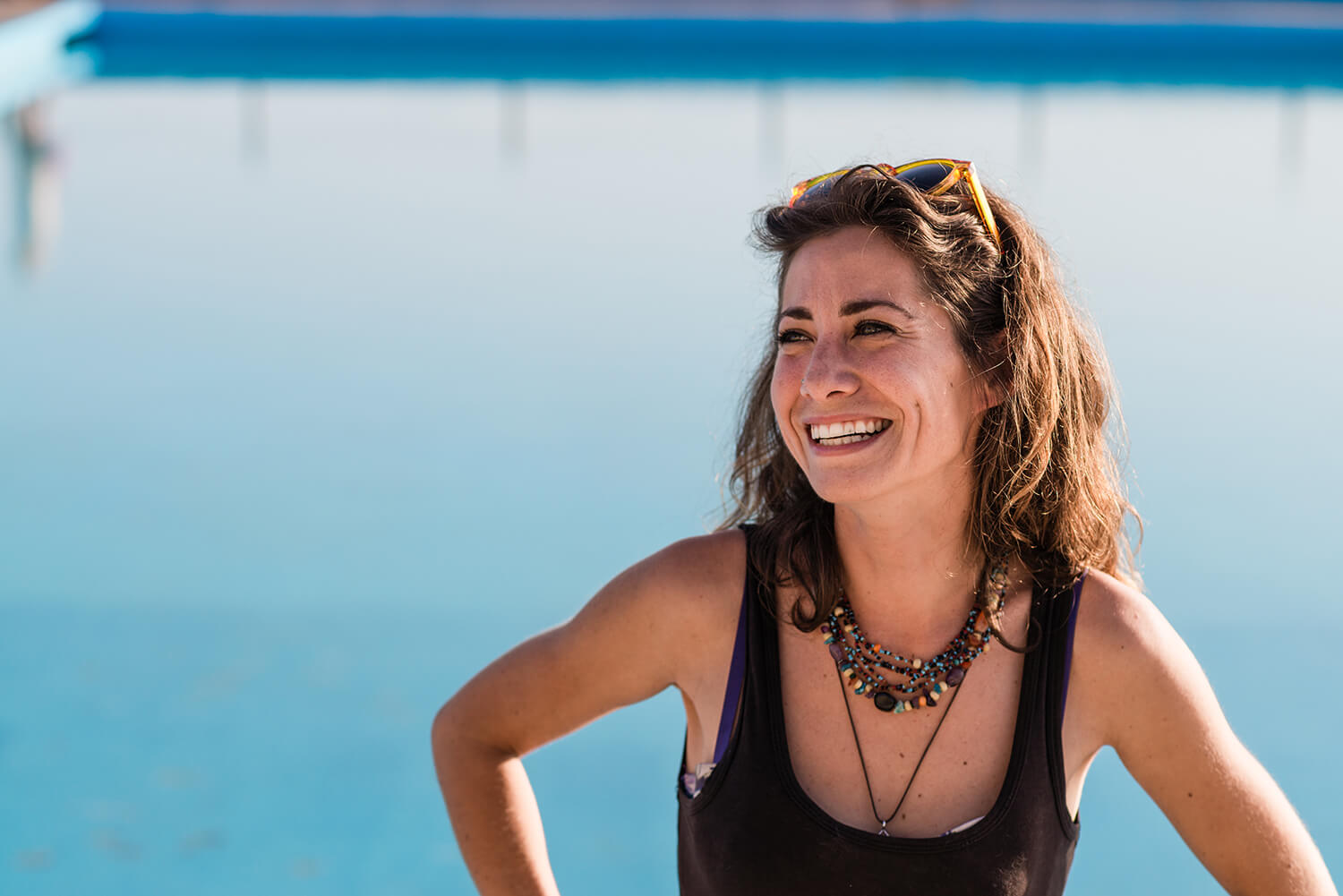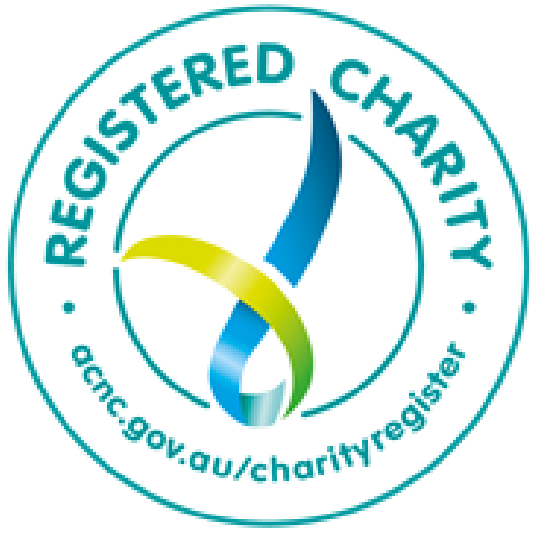The latest in diagnosis and care from the annual ANZAED conference
This episode goes live on September 6, 2023
We snuck into the annual Australia and New Zealand Academy for Eating Disorders (ANZAED) conference to illuminate the future of eating disorder diagnosis and care. We recorded on-site at the conference, where we asked various speakers to give us a taste of their research for the sake of all those who’d be interested but couldn’t be there.
Segment 1: Reviewing current treatment approaches
Dr. Anthea Fursland, a distinguished clinical psychologist for the past 40 years, shares a candid perspective on the strides made in treatment, especially for Anorexia Nervosa, but offers insights about the gap between new understandings and legacy approaches to care.
Segment 2: NDIS engagement for people with eating disorders
Hilary Smith, a National Manager at the National Eating Disorder Collaboration (NEDC), talks about what may be required, and what we still need to know, for people with eating disorders to access support from the National Disability Insurance Scheme (NDIS).
Segment 3: Body dysmorphic disorder and cosmetic surgery
The point where body dysmorphic disorder and cosmetic surgery intersect is where researcher Dr Toni Pikoos does much of her work. She’s been deeply involved in crafting new, enforceable guidelines to protect the psychological safety of patients.
Segment 4: The possibility of laws to protect body image
Marilyn Bromberg is an Associate Professor of Law at UWA and an expert on laws to discourage content that is well understood by researchers to negatively impact body image. While there is some precedent in other parts of the world, there’s more we can do in Australia.
Segment 5: Dealing with an eating disorders crisis and emergency care
Mental health occupational therapist Genevieve Pepin presented on “Eating disorders, carers, and the emergency department: A recipe for disaster.” It’s a carer’s worst nightmare and Genevieve tells us just how bad it can get but also how we can make the experience less traumatic for families.
This is the first of two episodes covering the conference. Look out for Part 2 in October 23.
Find out more about the annual ANZAED conference
Find out more about Anthea Fursland
Find out more about NEDC’s work around the NDIS
Find out more about Toni Pikoos
Dr Anthea Fursland 00:01
I absolutely believe that knowledge is power. If you know what’s going on, you have a better chance to make good decisions. So we need to individualise every aspect of our treatment.
Dr Marilyn Bromberg 00:12
We live in a world that is very hypocritical because on the one hand, you have all this, this world that is obesogenic but on the other hand, we’re expected to be thin and thin is beautiful, right?
Dr Toni Pikoos 00:23
If they really see it as a physical problem, and don’t recognise that there might be a psychological issue, that it’s often not advisable to go ahead with cosmetic surgery.
Hilary Smith 00:32
Where might you start to consider that a person with an eating disorder should be NDIS eligible? Something that we’ve heard quite consistently on a sort of anecdotal level is that eating disorders aren’t eligible.
Sam Ikin 00:44
This is a very special episode of Butterfly: Let’s Talk from your friends at Butterfly Foundation. I’m Sam Ikin. Thanks for being here. One of our main goals in this podcast is to give people hope. Hope that things can get better, hope they can find recovery. We know that recovery is tough, and that research and understanding around eating disorders are moving forward, but slowly. So to get a better idea of what’s in store for the future, we crashed the annual conference of the Australia and New Zealand Academy for eating disorders, or ANZAED as it’s known to people who work in the sector.
Dr Anthea Fursland 01:18
We’re talking about individualising treatment. Individualising treatment even further than it has been.
Sam Ikin 01:26
Over the past few decades, our understanding of eating disorders and how to treat them has come a long way. But the treatments that have been shown to work the best were originally developed 20 years ago. That’s according to Dr. Anthea Fursland. She’s a PhD clinical psychologist with over 40 years of experience, and she’s worked all over the world. So does that mean that we haven’t come as far as we think we have to to the start of the millennia.
Dr Anthea Fursland 01:52
The most common treatments for children and adolescents with anorexia nervosa is family based treatment and that was developed in the end of the last century. The most common transdiagnostic treatment for youth and adults is enhanced cognitive behaviour therapy CBT E, which again, was developed at the turn of the century. So although these are the two leading evidence based treatments, our view is that we need to enhance them even further, improve them with the developments that we have seen over the last two decades.
Sam Ikin 02:32
So rather than create completely new ways of treating, let’s work on what we’ve already got, and try to use some of the new research that we’ve got to enhance it.
Dr Anthea Fursland 02:41
That’s our stance. I’m open to new ideas. But at the moment, the treatments we have seem to be very efficient and have good structure, and provide the scaffolding for treatment, but often don’t go deeply enough into the issues that the individual and the families are facing. And we believe that a lot of the new developments is that we can integrate these new developments into older treatments.
Sam Ikin 03:13
When we talk about a holistic kind of approach to eating disorder recovery and eating sort of treatment. Does this complement that? Or is this part of that?
Dr Anthea Fursland 03:23
Absolutely. We’re talking about individualising treatment. Individualising treatment even further than it has been. One example is including the information about neurobiology and genetics that we weren’t aware of 20 years ago, informing the families of the biological aspects of the disorder, highlighting the psycho psycho education for families and individuals. I absolutely believe that knowledge is power, if you know what’s going on, you have a better chance to make good decisions. So we need to individualise every aspect of our treatment.
Sam Ikin 04:04
I was talking to another prominent researcher in eating disorders a little while ago, and he said that, despite all of the increases, and the what’s the word, all the developments, all the new developments that we’re making all the time, it still doesn’t work all that well.
Dr Anthea Fursland 04:20
No, it doesn’t. Unfortunately, our treatments are still very limited. But our understanding is growing all the time. What we’re talking about is the need to use all the information we have to have better outcomes.
Sam Ikin 04:39
Or how do you feel about the future?
Dr Anthea Fursland 04:42
It looks more positive. But I think we we have to keep learning, keep learning more and keep applying what we learn so that the people at the end, which is the patients and the families can have better outcomes we need to include the voice of lived experience. That’s one of the things we’ve learned to the last 20 years, to value that voice. And we need to move forward in a very much in integrating the knowledge we have not just using one aspect of it and that’s what you’re saying holistic treatment.
Sam Ikin 05:19
What do you need, say you rubbed a lamp and out I popped as a Genie. What will you ask me for?
Dr Anthea Fursland 05:27
Money. Money! Money for research, money for better treatments, money to educate people, money for prevention. If we, as a culture, understood the risk factors for eating disorders, we could improve nutrition as children, we could challenge diet culture. We could have schools not showing movies about how bad sugar is. My granddaughter a few years ago, didn’t eat birthday cake at her cousin’s birthday, because she just seen the video on sugar. And she said sugar is bad for you. Now, that’s just shocking.
Sam Ikin 06:13
People will argue with you. But this is what we found out after I can prove it to you sugar is bad. We should be telling kids that. How do you straddle this, these two needs with this being correct information, but at the same time being quite harmful for kids. Is there a way that we can do that without, like, you know, just censoring information?
Dr Anthea Fursland 06:34
It’s about it’s about moderation. And not having black and white thinking good foods, bad foods. That’s the beginning of the problem for a lot of people.
Sam Ikin 06:44
That makes a lot of sense. Thank you so much for your time. I appreciate it. And I think it’s lunchtime. So I think you might be worth going back down. Eating disorders or serious mental health conditions, we know that we talk about it all the time, people affected and their families can have their lives turned upside down, but the often expensive treatment or residential care isn’t covered by the NDIS. That’s the National Disability Insurance Scheme. That doesn’t make sense to Hilary Smith, who’s one of two national managers at the NEDC. That’s the National Eating Disorders Collaboration. So we pulled her out of the conference to have a quick chat about it.
Hilary Smith 07:29
Okay, so NADC was commissioned by the Federal Government Department of Health to prepare a paper. And the substance of the paper was really to understand what are the engagement issues for people with eating disorders, with the NDIS. So I gather that the department had heard from a few different sources that there was something going on there that didn’t seem like it was quite working, or that something needed to be better elucidated or better understood. And so our role was to kind of get in and do a little bit of policy detective work, which I have to say, being me I quite enjoyed.
Sam Ikin 08:05
Nice. And what did you find?
Hillary Smith 08:07
A few things. One, I suppose to step back a couple of notches, one of the things that we wanted to look at was, who should be or who is eligible for the NDIS. And our eating disorders in or out, because that mean that we’ve heard quite consistently out of sort of anecdotal level is that eating disorders aren’t eligible, or you might hear from a person that lived experience, “I tried to get support from the NDIS and I was told that eating disorders aren’t included because they’re not on the list,” so we took it back to “Okay, let’s try to understand eligibility and figure out how that works and where it where it sort of happens within the sort of spectrum of eating disorders. Where might you start to consider that a person with an eating disorder should be NDIS eligible,” and there’s sort of two groups within that. There are people who have a disability, that could be any disability, could be autism, could be ADHD could be anything else that has rendered them eligible for the NDIS and they also have an eating disorder. So there are a whole person. So there’s a question around what eating disorder supports might they need to get from the NDIS as distinct from the health system? Yeah. Then there’s a separate group of people who have had long standing eating disorders, and the question of whether or not they should be eligible for the NDIS just based on their eating disorder alone.
Sam Ikin 09:28
Right. Okay. Should they?
Hillary Smith 09:32
It’s, it’s a little bit complicated in that it’s so simple. So I feel like the the source of truth for who isn’t isn’t eligible for the NDIS easily NDIS Act. Okay. The NDIS Act sets out three eligibility criteria. The first is age, so the person has to be under 65 when they first attempt to access the scheme, although if they get it under 65, then they can carry it throughout the rest of their lifespan. The second is residency so they have to meet an Australian residency requirement, and then the third is the disability requirement and there are no diagnostic specifications made about the disability requirement in the NDIS Act. So rather than it being autism, in eating disorders or out, ADHD is maybe or whatever it might be saying, if you’ve got a condition that is, is or is likely to be lifelong, and that affects you in a functional area of your life, and that could be quite broad, that could be day to day activities that could be mobility, that could be communication, and if that thing impacts your ability to participate, either in the community or in work or in education, if those three things are met, then that counts enough for the disability for you to be NDIS eligible.
Sam Ikin 10:51
So how about eating disorders, not?
Hillary Smith 10:53
Some aren’t, because a lot of people as we know, have the capacity, the recovery or the potential for recovery.
Sam Ikin 11:00
But to say that all of them that none of them can be like that’s that there are definitely eating disorders that meet those criteria.
Hillary Smith 11:05
That’s right, those we know there are percentages of people with particular diagnoses of eating disorders, who won’t recover, and who, for whom it will be a long standing and lifelong condition. So those people if they meet those other two requirements, and they could be met by like a person may experience physical weakness associated with the eating disorder, and that affects their mobility, right? So if the if we can meet those criteria, then a person with an eating disorder may be eligible for the NDIS on their own on its own right, without having to have an additional disability as well.
Sam Ikin 11:34
Okay. But does anyone just have an eating disorder? Most people have got co occurring conditions, many of them are neurodivergent. Many of them are classified as disabilities, I suppose. So it’s an that’s an interesting kind of a place where we find ourselves.
Hillary Smith 11:49
Yeah. And I think that the point of interest to just go into that a little bit further, if we know that there are 500,000 people currently with access to the NDIS, it’s interesting that we’ve only got data showing that 90 People with anorexia currently have NDIS access. And we don’t have any data on any of the other diagnostic presentations at this point in time.
Sam Ikin 12:11
Yeah, okay. Well, so what do we need to do?
Hilary Smith 12:14
Well, NEDC has made a few recommendations, and I have to stress that they haven’t necessarily been taken up yet, because the paper is only brand new. But a few a few things, and an easy one is improved the data collection. So let’s actually get a full picture of who is in this scheme who already has an eating disorder. Let’s get an understanding of you know, the conditions other than anorexia as well and understanding whether there’s anyone in there who has that as their sole diagnosis as distinct from whether there are people in there who have co occurring bulimia, binge eating disorder, OSFED, ARFID, any other condition, increasing our understanding of that, I think is a really key first step to then being able to demonstrate that there’s a workforce development need within the NDIS as well for people who have a role in whether it’s assessing someone’s eligible eligibility in the first place, or whether it’s being a planner and you know, figuring out the sort of the support package that a person is entitled to, to better understand, oh, wow, this is actually quite a substantial issue for these number of people and these are the functional ways in which an eating disorder actually impacts a person.
Sam Ikin 13:25
Another interesting area of concern in the body image space is cosmetic surgery. Toni Pikoos is a clinical psychologist and a postdoctoral researcher who’s put a lot of work into understanding people with body dysmorphic disorder (BDD), who want cosmetic procedures. Her presentation at the conference was about protecting vulnerable people who were looking for cosmetic surgeries, so of course, we had to pull her aside to talk about it.
Dr Toni Pikoos 13:51
Often, there is a really distorted perception of what you look like. So people might fixate on their nose or their skin and believe that, you know, their nose is ginormous, when really, it looks quite in proportion. And so it’s something that looks slight or potentially non existent to other people, but feels really significant to them. And because of that people will go and try to get a nose job, for example, and fix their nose when really, there’s nothing wrong with it. And therefore, they’re at risk of being dissatisfied with the procedure or getting lots of surgeries that they don’t necessarily need.
Sam Ikin 14:22
What’s your advice to people who want to have surgeries who have these conditions?
Dr Toni Pikoos 14:27
So this yeah, there’s actually been huge changes in the cosmetic industry in Australia. And they now require that if there are any underlying psychological issues like body dysmorphic disorder, a person actually needs to have a psychological evaluation before getting surgery. And so that process is quite comprehensive, but we do look for signs of body dysmorphic disorder and assess for that. And it doesn’t mean that someone who has BDD can’t get cosmetic treatment. It just means that usually they need a bit of extra support beforehand potentially some In counselling to work on their BDD symptoms, that they can then make an informed choice about whether or not to go ahead. But there are certain situations where if someone has very poor insight, you know, they they really see it as a physical problem and don’t recognise that there might be a psychological issue that it’s often not advisable to go ahead with cosmetic surgery.
Sam Ikin 15:21
If somebody is experiencing a dysmorphia about their body, will it matter whether they have the surgery or not?
Dr Toni Pikoos 15:28
Not usually, because it is that distorted perception, it’s not there’s nothing physical really to address with the procedure. So most often they’re unhappy with the results. Or they find that the concern just shifts to a new area, you know, they fix their nose and then start to worry about their forehead or something else, and it can become an endless process.
Sam Ikin 15:46
So what’s the recommended treatment?
Dr Toni Pikoos 15:50
For body dysmorphic disorder, cognitive behavioural therapy tends to be evidence based best practice. And essentially, the goal is helping to shift the focus away from the problem is my appearance. The problem is that I’m ugly, to the problem is the anxiety that I have around my appearance, and then being able to work on managing that anxiety and challenging all the different behaviours that come with that, which might be you know, avoiding social situations or covering yourself up a lot of the time.
Sam Ikin 16:18
And what’s the success rate for that kind of treatment?
Dr Toni Pikoos 16:22
Pretty high for BDD. These estimates vary between 60 to 80%. efficacy. It does take more sessions than usually offered, around 16 to 20 sessions, but it does tend to be quite effective, and definitely more so then cosmetic treatments.
Sam Ikin 16:39
What’s the co-occurrence between BDD and eating disorders?
Dr Toni Pikoos 16:44
It is quite high. I can’t remember the number off the top of my head, but I know for both, you know, when it’s primary body dysmorphic disorder, I think it’s around 40% also have a co occurring eating disorder and vice versa. You know, if it’s a primary eating disorder, it’s very common for BDD to co occur as well. And that’s when someone might fixate on their skin or their face, but also have weight and shape concerns or disordered eating present
Sam Ikin 17:10
On July the first this year, so not very long ago, Australia became the first country in the world to regulate a set of guidelines for cosmetic surgery to protect the psychological safety of patients.
Dr Toni Pikoos 17:22
Essentially, all patients seeking cosmetic surgery or non surgical procedures need to be screened or assessed for underlying mental health issues like BDD, and if any concerns are identified, if any red flags are raised, they then need to have a psychological assessment done before going ahead with the procedure, which I think is really fantastic. There’s been so much research, emphasising the need for that for the last 30, 40 years, and it’s the first time that it’s actually been translated into practice and policy. So it’s been a really important change.
Sam Ikin 17:55
Toni herself was involved in a review of the cosmetic industry by AHPRA, and she says the new guidelines are enforceable.
Dr Toni Pikoos 18:02
Yeah, now that it’s regulation from AHPRA, and the medical board, essentially, if they’re not doing it, they can lose their medical registration. So there is accountability now, which is awesome.
Sam Ikin 18:12
One of the first people that we heard speak was Marilyn Bromberg. She’s an associate professor of law at the University of Western Australia and one of her main research areas is body image law, so naturally, I had to find out more about that.
Dr Marilyn Bromberg 18:37
We live in a world that is very hypocritical, because on the one hand, you have all this, this world, that’s obesogenic that conspires to make us gain weight. So you have all this unhealthy food everywhere unhealthy food marketing, on social media and in our faces, right? So we have sedentary lifestyles, our expected to work long hours, etc. So therefore we have on the one hand, you know that but on the other hand, we’re expected to be thin and sin is beautiful, right? So it’s just hypocritical juxtaposition that is so unfair. What I would love to see is law that can help people’s body image that is evidence based. We know from the evidence from our health researchers, that when people see images that have diverse body sizes, then, you know, not just the stereotypical thin person, but people who are diverse body sizes, that this can be good for their body image, right, as opposed to when they see images of just the thin body ideal, then from the health researchers, we know that that is not good for body image.
Sam Ikin 19:43
What are some of the precedents that there are around the world? So is there a standard that we should be aiming for or is that still in the process?
Dr Marilyn Bromberg 19:51
So there are three countries that have passed body image law; Israel, as well as France as well as Norway, however, their body image law doesn’t reflect the health evidence, which is, which is interesting. But the thing is that as a lawyer, I can tell you that it’s common to see legislation that doesn’t actually reflect the health evidence, right. So so essentially, a key component of the laws in Israel, in France and in Norway, is that if an image is modified to make the model look thinner, than it needs to have a warning, saying something like this, you know, this image has been modified, right? But the thing is that from a health research, we know that people actually pay more attention to the imaging pair themselves more some people do when they see this label. So the label actually from the health research isn’t actually going to work. And in fact, I’ve even emailed politicians myself, I said, this is a health evidence, listen, your body image law isn’t gonna work. And I, you know, I get no response.
Sam Ikin 20:44
What do you think Australia should do?
Dr Marilyn Bromberg 20:47
I think that we need legislation regarding models, in terms of their size. So you go to the people in health, the experts in this area, what is good for body image? And then you need to also if you have have a law as well, it’s very important as well, that the government has the resources to actually enforce it, so don’t just pass a law and then forget about it and then, you know, just expect people to follow it, that’s not realistic. So you need to have education about the law, try to change society as hard as that would be. But also, you know, just actual enforcing the law, putting the resources in so that way, the law is actually more than just a symbolic one.
Sam Ikin 21:32
Is there precedent that these things work?
Dr Marilyn Bromberg 21:35
Good question. Will it work? Well, the thing is that we know that from the health researchers, we know that seeing diverse images is good for body image. So we know from a health perspective, it’ll work in terms of will it actually work as a law, there is no precedent in terms of an actual law of this kind in the world. Okay. But I think that it would be great if Australia could be a leader if Australia you know, for example, Australia has been a leader when it comes to plain packaging of tobacco. So I think that it wouldn’t be worth Australia become a leader, but I’d been the main thing that I’m advocating for is that if Australia has a body image law, it needs to reflect to the evidence current body image laws overseas don’t reflect the compelling health evidence, but what will actually work to improve body image.
Sam Ikin 22:36
And our last guest for this episode from the ANZED conference on the Gold Coast is Genevieve Pepin. She is a mental health occupational therapist, with 20 years experience working in the field in Australia and in Canada. At the conference, she gave a presentation called Eating Disorders, Carers and the Emergency Department: A Recipe for Disaster. The title explains it quite well. It was about some research that she was involved in which I’ll let her explain.
Assoc Prof Genevieve Pepin 23:04
The research question, which is about understanding the experiences of carers, when they go to the emergency department with their loved one, really, with an eating disorder really came from carers. Carers who called me and said, Genevieve, we’re hearing from our members, and it was led by Eating Disorders Families Australia, so EDFA, was really involved, and they’re, some of their members called me and said, we keep hearing these awful stories, but there’s no evidence, we don’t have anything perhaps more organised around understanding that experience or these experiences. And that’s, that is the starting point. So it really started from carers themselves who had such a difficult experience going to the emergency department.
Sam Ikin 23:52
So what’s an example of a bad experience?
Assoc Prof Genevieve Pepin 23:55
Some of the worst examples that we heard because we did several interviews, we did a survey to have some quantitative data numbers. And we also wanted to have interviews to have rich stories. We wanted to know about the stories. And in my opinion, one of the worst example that I heard was when a young woman presented to the emergency department with her mum, and after I think it was about, they had to wait around seven or eight hours before being seen by a registrar. And they entered the room and the young woman who was completely in this space where she thought she did not have an eating disorder she was fine, and her parents were wrong. But she agreed to come just to shut them up in a way if I can say it like that. Yeah. And she explained it in that way to the registrar who said, “Ah, yeah, I understand,” and he was looking at the mum then looked at the daughter and said, “And I bet you your mom is menopausal,” and he started laughing. To me that was horrifying to hear that and it was horrifying…
Sam Ikin 24:57
What an awful thing to say.
Assoc Prof Genevieve Pepin 24:58
Yes.
Sam Ikin 24:59
And so is that representative of an attitude that you might find among, look, we understand ED workers are overworked, they could be at the end of the shift. They might be feeling a little bit upset. They do or say things that they maybe wouldn’t other times, but is that is this something that is representative, or maybe not to that extent?
Assoc Prof Genevieve Pepin 25:22
That was really the the worst example. And I have to say that this study was done during COVID. The people who participated in the interviews were mostly from Victoria, where we had locked down and everything. So I think this staff at the emergency departments were just overwhelmed as well. So I think we need to consider that as well. The context in which the study took place, like the interviews took place as well, because that was really like the extreme that one extreme, but then there was the other extreme. So we had wonderful examples of amazing support.
Sam Ikin 25:57
I should ask for an example of that, like, what is the best practice or the best case study?
Assoc Prof Genevieve Pepin 26:03
There’s two examples that come to mind. One was, so the parents could not come to the emergency department because of COVID and they’re locked down in Melbourne, but they stayed and they park their car across the road from the emergency department and mum and dad sort of rotated in ships almost for the period of time that their daughter was in the emergency department. And there was nursing staff who just crossed the road, knocked on their window with their mask and their face shade and everything wind down to windows and say, “Look, she’s at this stage, now we’ve done this,” like really running across the road, to just let the care the parents know that they were looking after the daughter she was being looked after, and where they were in a sort of process, I thought was a wonderful example.
Sam Ikin 26:50
Doesn’t that just highlight the amazing work that carers do the care the time effort that they put in? To make sure that the young one is…
Assoc Prof Genevieve Pepin 26:59
Absolutely, they always put themselves and I’ve done other work, I’ve been working with carers for a long time. And I remember carers saying, This is not about me. My needs are so far down my list of priorities, this is all about my child, or the person that I care for looking after them making sure that I support them or that I navigate the services for them. And I’m able to provide care for this person that I love. And then if I’m stressed, if I’m tired, if I’m getting really depressed, this is not relevant. I will deal with that later. So it’s this sort of going above and beyond themselves to actually support their loved one I think is just amazing.
Sam Ikin 27:44
Huge credit to all the carers going through hell alone with their kids. Is the emergency department the right place for us to go?
Assoc Prof Genevieve Pepin 27:53
I think I think that in some instances when there’s the person is with eating disorder is medically compromised, I think, yes.
Sam Ikin 28:00
If we can’t get around the fact that we’re going to need to present it an emergency department. How do we fix it?
Assoc Prof Genevieve Pepin 28:08
That’s what I love about carers, because they they’re in the experience all the time. 24/7, it never stops. It’s like part of their brain is in the solution mode. And they have a list of things. So some of the carers that were part of this specific study will say, now, one of the things that you need to do is talk to your GP or the psychologist or the psychiatrist or the paediatrician and ask them to call the emergency department. And then when once that’s done, there is a clear line of communication, they expect you at a certain time their child is going to be present, will have a specific clinical presentation, and then it’s much quicker.
Sam Ikin 28:51
That’s Genevieve Pepin, and wow, it was very difficult to keep some of these conversations brief. This was the first of two episodes that we’ve been releasing that we recorded at the conference, the ANZAED conference that is, on the Gold Coast. The next one will come out next month. Now if you want to find out any more about any of our guests from this episode, all of the links that you need will be in the show notes. If you’re struggling with an eating disorder, or you care about someone you think might be struggling, the best thing to do is to reach out. The Butterfly National Helpline is 1800 ED HOPE, that’s 1800 33 46 73, 1800 33 46 73 or go to butterfly.org.au where you can chat online, we’ll just look at some resources and find out a little bit more about what it all means. It’s a really good first step. I’d also encourage you to have a look at the website for the Australia and New Zealand Academy of Eating Disorders, particularly if you’re a clinician or a professional working in the sector. Butterfly: Let’s Talk is produced for Butterfly Foundation in partnership with Ikin Media, with the help of the Waratah Education Foundation. Our Executive Producer is Camilla Becket. And as always, please leave us a rating and a comment in the app where you’re listening to this podcast. We’d really appreciate that. I’m Sam Ikin, thank you so much for your company.





